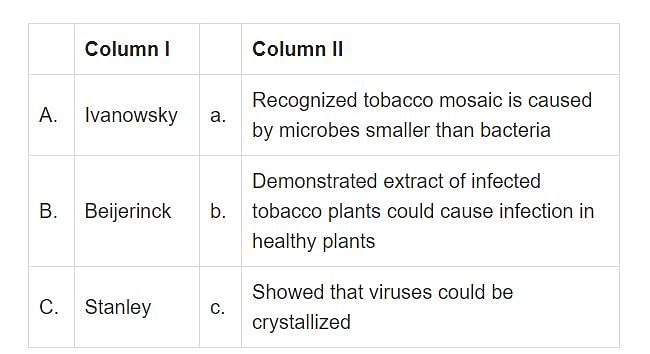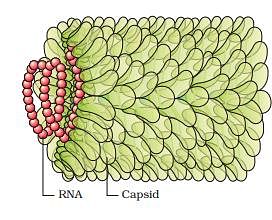Test: Virus - 1 - NEET MCQ
15 Questions MCQ Test Biology Class 11 - Test: Virus - 1
The figure given below shows the structure of a bacteriophage. Identify its parts labelled as A, B, C and D.

Which of the following organisms did not find a place in Whittaker's five kingdom classification due to their non-cellular structure?
Who was the scientist that recognized certain microbes as the causal organism of the mosaic disease of tobacco?
Which scientist demonstrated that viruses could be crystallized and that these crystals consisted largely of proteins?
Match the Scientists in Column I with their contribution in the field of virology given in Column II and select your answer from the codes given below:

Assertion [A] Viruses are considered to be at the borderline of living and non-living things.
Reason [R] Viruses cannot survive outside the host organism.
|
180 videos|362 docs|148 tests
|






















